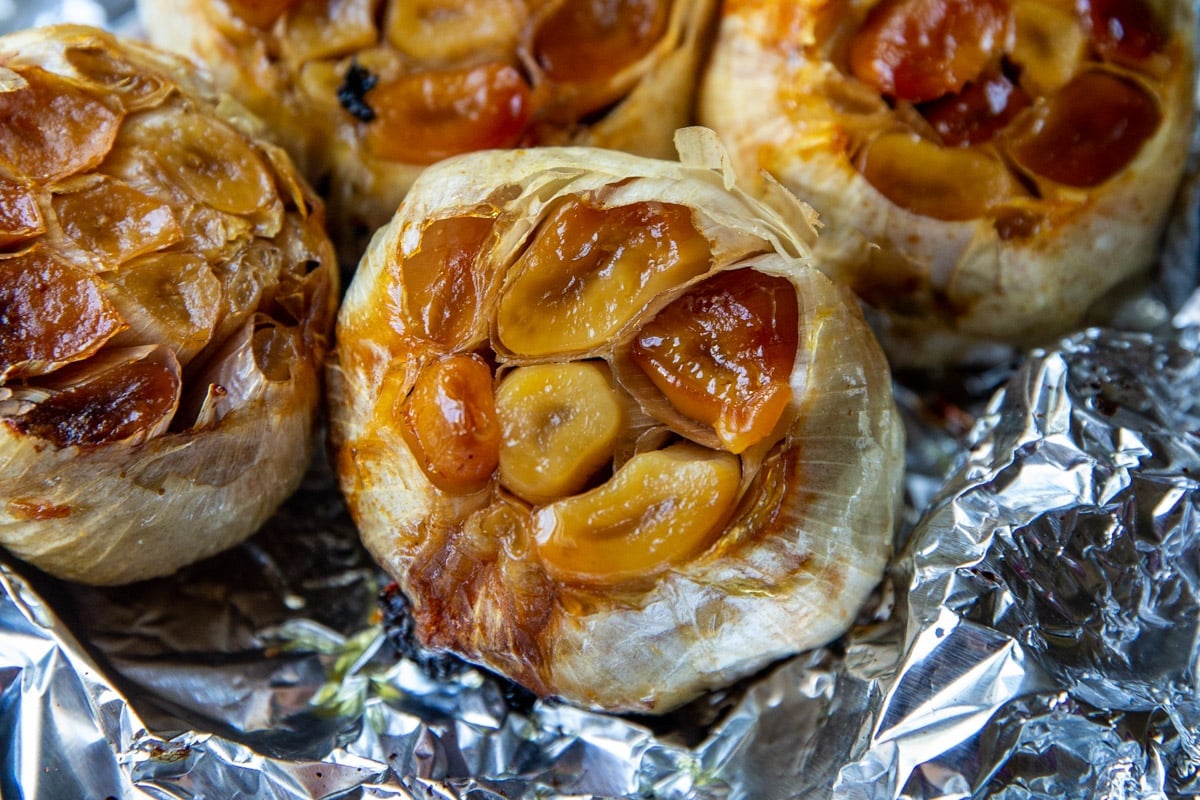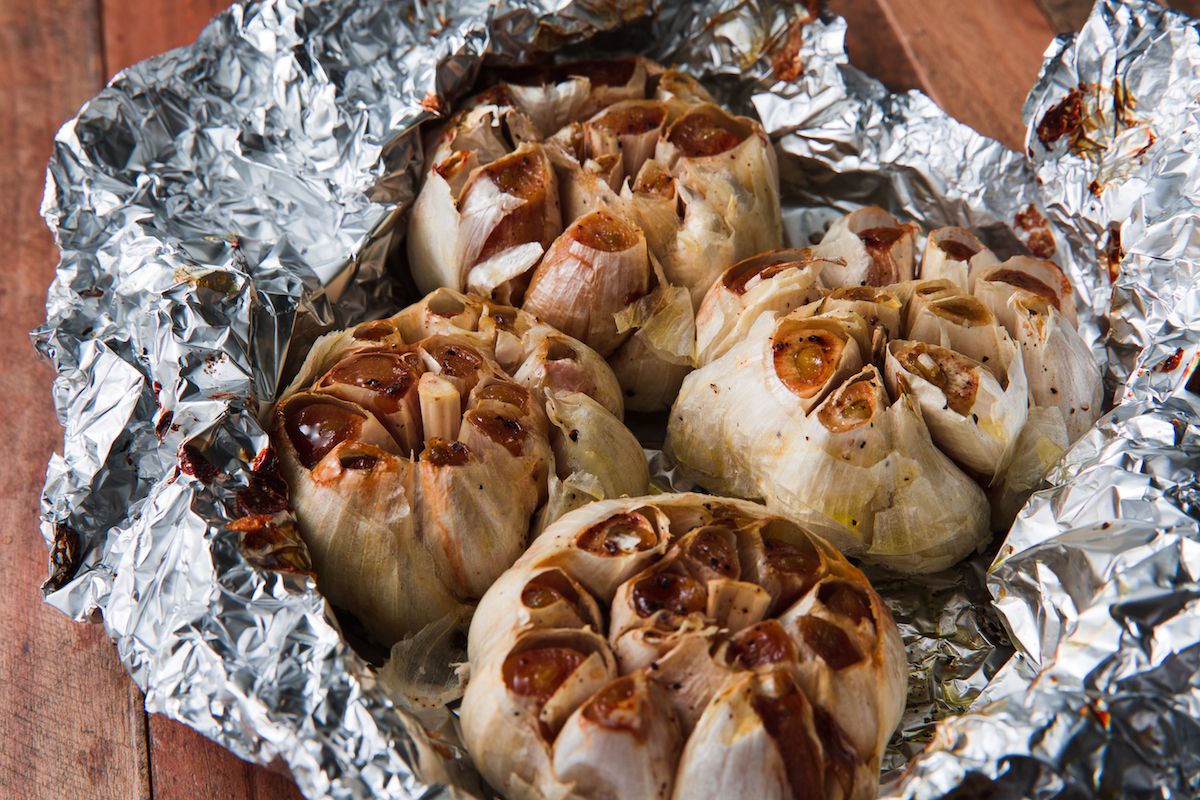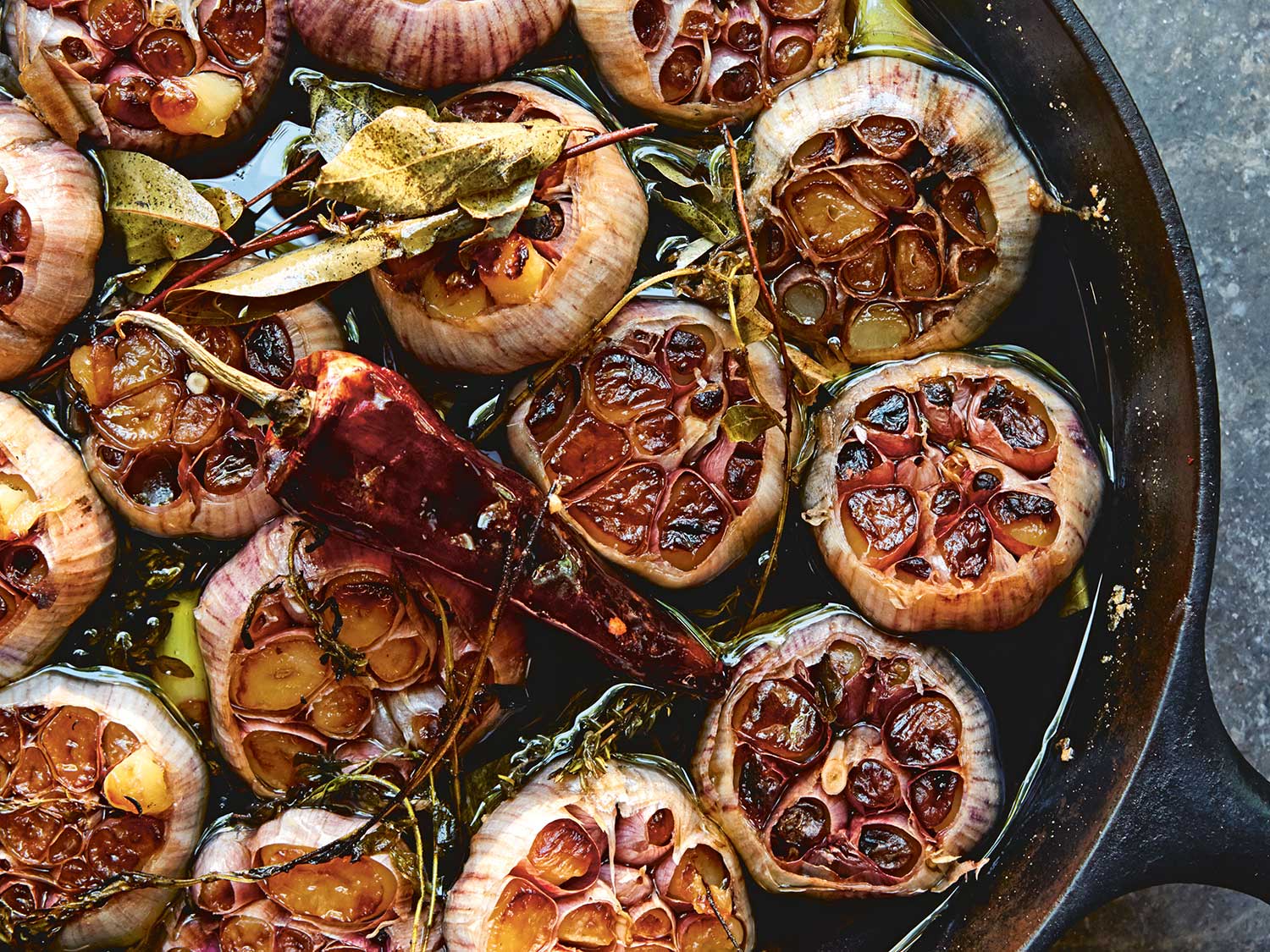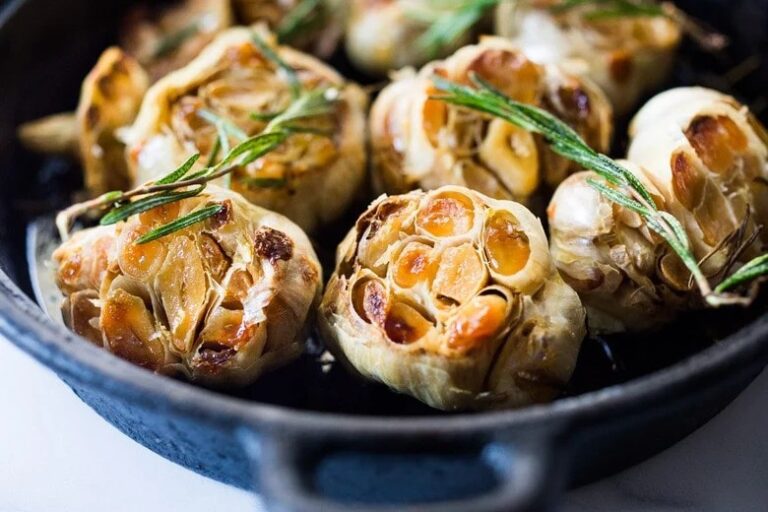Roasting garlic transforms the pungent bulbs known for their sharp, raw bite into something utterly different: soft, sweet, spreadable cloves that enhance any dish they touch. This comprehensive guide will delve into the art and science of roasting garlic, offering insights and tips to perfect this simple yet transformative kitchen technique.
The Basics of Garlic Roasting
Roasting garlic might seem straightforward, but understanding the process’s nuances can elevate your culinary skills. At its core, roasting involves simmering garlic in an oven, causing it to caramelize and mellow in flavor. The result is a creamy, nutty, slightly sweet concoction that can be used in myriad ways—from spreads to flavor enhancers in soups, stews, and sauces.
Choosing Your Garlic
The journey to perfectly roasted garlic begins with selecting the right bulbs. Look for firm, plump bulbs with tight, unbroken skins. The quality of the garlic will significantly impact the final product, so opting for organic or locally sourced bulbs can provide the best flavor profiles.
Preparation Is Key
Preparation involves minimal steps but is crucial for optimal roasting. Start by preheating your oven—anywhere from 350°F to 400°F works well, depending on how slowly you wish to roast the garlic. Cut the top off each bulb to expose the cloves, leaving the bulb intact. This step ensures even roasting and makes the cloves easier to squeeze once cooked.
The Roasting Process
Once your garlic is prepped, place the bulbs on a piece of aluminum foil large enough to wrap them completely. Drizzle with olive oil and season with salt, then cover the foil around the bulbs tightly. The oil and seasoning flavor the garlic and help it roast evenly without drying out.
Oven Time
Place your wrapped bulbs on a baking sheet and roast in the oven. The cooking time can vary from 40 minutes to an hour, depending on the size of your garlic bulbs and your oven’s exact temperature. You’ll know the garlic is done when it’s soft to the touch and a rich, golden color. Let it cool slightly before handling.

Culinary Applications
Roasted garlic is incredibly versatile in the kitchen. Its mellow sweetness and depth of flavor make it a fantastic addition to almost any dish. Spread it on toast for a simple appetizer, mash it into a paste for dressings or sauces, or mix it into mashed potatoes or hummus for an extra flavor dimension. The possibilities are endless.
Storing Roasted Garlic
If you find leftovers, roasted garlic can be stored in the refrigerator for up to two weeks. Ensure it’s in a tightly sealed container, or better yet, mix it with a bit of olive oil to keep it moist and flavorful. For several months, You can freeze roasted garlic, either whole or pureed.
Tips for Perfect Roasted Garlic Every Time
- Don’t Skimp on Quality: High-quality, fresh garlic will yield the best results.
- Temperature Matters: Roasting at a moderate temperature allows the garlic to caramelize without burning.
- Be Generous with Oil: Olive oil not only adds flavor but also prevents garlic from drying out during roasting.
- Patience Pays Off: Allow the garlic to roast slowly and cool slightly before squeezing the cloves. Rushing this process can result in unevenly cooked cloves or difficulty in handling.
- Experiment: Once you’ve mastered the basic technique, don’t be afraid to experiment with added flavors. Sprinkle some herbs or spices before roasting for a unique twist.
Selecting the Right Oven Temperature
The oven temperature is a critical factor in roasting garlic to perfection. While 350°F to 400°F is a general guideline, adjusting the temperature can affect the garlic’s texture and flavor. A lower temperature allows for a slower roast, leading to a more caramelized result, whereas a higher temperature can give the garlic a more robust flavor in a shorter time. Experimenting with different temperatures within this range can help you find the perfect balance for your taste and the specific application you have in mind.

The Role of Foil in Roasting Garlic
Aluminum foil plays a crucial role in the roasting process. It is a protective barrier that locks in heat and moisture, allowing the garlic to steam and caramelize without burning. Wrapping the garlic bulbs tightly in foil ensures they cook evenly, retaining their natural juices and enhancing their sweet, nutty flavor. This method also makes cleanup easier, preventing the oil and garlic juices from spilling onto your baking sheet.
Creative Ways to Use Roasted Garlic
Roasted garlic’s versatility extends beyond traditional uses. For a creative twist, try incorporating it into breakfast dishes, such as omelets or avocado toast, for a depth of flavor that complements the other ingredients beautifully. It can also be blended into mayonnaise or butter to create a delicious spread for sandwiches and burgers. Mix roasted garlic into yogurt for a healthier option to make a tangy, flavorful dip for vegetables or pita chips.
Health Benefits of Roasted Garlic
Aside from its culinary uses, roasted garlic is also known for its health benefits. Garlic has been used for its medicinal properties for centuries, and burning it can make these benefits more accessible. Roasted garlic is a good source of vitamins and minerals, including vitamins C, B6, and manganese. It also contains antioxidants that can help protect against oxidative stress and reduce the risk of chronic diseases such as heart disease and cancer.

Roasting Garlic in Bulk
If you use roasted garlic frequently, consider burning multiple bulbs simultaneously to save time. Roasted garlic can be easily stored, as previously mentioned, making it a convenient ingredient to have on hand for elevating everyday dishes. When burning in bulk, ensure each bulb is wrapped individually in foil to maintain the ideal roasting environment, then store them in the refrigerator or freezer in airtight containers.
The Environmental Impact of Garlic Production
While garlic is a staple ingredient in kitchens worldwide, it’s essential to consider the environmental impact of its production. Garlic farming, like all agriculture, requires water, land, and other resources. Choosing locally grown garlic can reduce the carbon footprint associated with transportation. Additionally, organic garlic is grown without synthetic pesticides and fertilizers, making it a more environmentally friendly option. Consumers can enjoy this versatile ingredient while supporting sustainable practices by being mindful of where and how the garlic is sourced.
Roasting garlic is a simple technique that can significantly impact your cooking, adding complexity and depth to dishes with minimal effort. Whether you’re a seasoned chef or a home cook, mastering how to roast garlic is worth acquiring. Its versatility and flavor-enhancing properties make it a staple in culinary practices worldwide, transcending cuisine boundaries. So, next time you’re looking to elevate a meal, remember this guide and let the humble garlic bulb transform under the warmth of your oven into a golden, flavorful delight that can take your dishes from good to gourmet.

